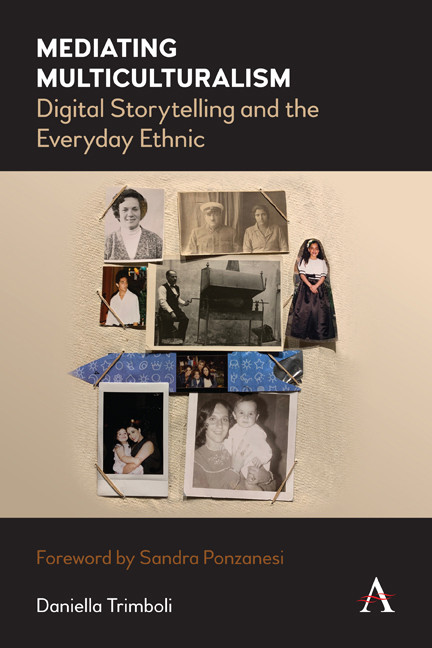Chapter Nine - Diasporic Disturbances: Alternative Digital Storytelling Techniques
Published online by Cambridge University Press: 21 August 2020
Summary
We must get beyond the rhetoric of continuance and inheritance in which the articulation of past and present is effected; we must resist what Walter Benjamin describes as the historicist (not historical) causality represented in ‘a sequence like the beads of a rosary’.
– Bhabha (1996, p. 191)If the relations that have had to be denied emerge to floor us, the competent and useful subject unravels a little.
– Bell (2007)A closer reading of digital stories that combines elements of performativity and affect has revealed moments of political possibility. The question remains: can these moments of tension be harnessed to create a noticeable friction on normative whiteness and enable new, more inclusive ways of being multicultural? Although typical migrant digital stories collapse difference into racialised binaries, some are adept at locating moments of instability and channelling them elsewhere.
In this chapter, I examine a small collection of films created in ACMI's digital storytelling programme that are able to carefully exploit slippages in the performative chain of whiteness. These stories, which include Ximena Silberman's Second Life (SL, 2007), Carla Pascoe's The Spaces In Between (SIB, 2007), Raymond Nashar's el ajnabi (EA, 2007) and Adam Nudelman's The Shoemaker (TS, 2007), utilise a few key tactics. Ximena’s and Carla's stories not only refuse to fulfil the promise of multicultural Australia, but thwart the terms the promise is built upon, highlighting the violence that the multicultural promise silences and conceals. Raymond's and Adam's stories demonstrate a restless reanimation of the ‘ethnic Australian’, interrogating cultural memory, identity and – importantly – the material manifestations of whiteness in both themselves and their surroundings.
Failed multicultural feelings
SL describes Ximena's migration from Buenos Aires to Australia following her graduation as an architect. The story reminisces on Ximena's student life and expresses a yearning for the company of her student friends. There is sadness present when Ximena talks of this past. When she turns to talking about her present life in Australia, she describes discovering her Jewish heritage in Melbourne/ Naarm and forming a new connection with it. Today, she feels settled and happy in Australia and, as such, the trajectory seems to mirror the typical migrant digital story examined so far.
- Type
- Chapter
- Information
- Mediating MulticulturalismDigital Storytelling and the Everyday Ethnic, pp. 157 - 168Publisher: Anthem PressPrint publication year: 2020



